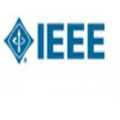The accurate classification of mass lesions in the adrenal glands (adrenal masses), detected with computed tomography (CT), is important for diagnosis and patient management. Adrenal masses can be benign or malignant and benign masses have varying prevalence. Classification methods based on convolutional neural networks (CNNs) are the state-of-the-art in maximizing inter-class differences in large medical imaging training datasets. The application of CNNs, to adrenal masses is challenging due to large intra-class variations, large inter-class similarities and imbalanced training data due to the size of the mass lesions. We developed a deep multi-scale resemblance network (DMRN) to overcome these limitations and leveraged paired CNNs to evaluate the intra-class similarities. We used multi-scale feature embedding to improve the inter-class separability by iteratively combining complementary information produced at different scales of the input to create structured feature descriptors. We augmented the training data with randomly sampled paired adrenal masses to reduce the influence of imbalanced training data. We used 229 CT scans of patients with adrenal masses for evaluation. In a five-fold cross-validation, our method had the best results (89.52% in accuracy) when compared to the state-of-the-art methods (p<0.05). We conducted a generalizability analysis of our method on the ImageCLEF 2016 competition dataset for medical subfigure classification, which consists of a training set of 6,776 images and a test set of 4,166 images across 30 classes. Our method achieved better classification performance (85.90% in accuracy) when compared to the existing methods and was competitive when compared with methods that require additional training data (1.47% lower in accuracy). Our DMRN sub-classified adrenal masses on CT and was superior to state-of-the-art approaches.
翻译:肾上腺(肾上腺(肾上腺)质量损害的准确分类,通过计算肿瘤(CT)检测到的肾上腺(肾上腺质量)的准确分类,对于诊断和病人管理十分重要。肾上腺质量可以是良性或恶性,而良性质量则具有不同的流行程度。基于卷发神经网络(CNNs)的分类方法,是尽可能扩大大型医学成像培训数据集中各等级之间差异的最先进方法。对肾上腺质量应用CNN具有挑战性,因为大量阶级内部差异、各等级之间的相似性以及由于质量损害大小而导致的培训数据不平衡。我们开发了一个深层次的多层血层相似性网络(DMRN)来克服这些限制,并利用配对配对的CNNs来评价各等级内部的相似性。我们用多层特征成型特征培训数据,我们用随机抽样的肾上腺质量分析方法将培训数据扩大到减少不平衡的程度。我们用229个高层次的血压图像扫描方法,在进行直径上,我们用直径上的直径直径直径直径直径直径直径直径直径直径分析时,我们用直径直位数据进行了5比重数据分析。我们的方法进行了一次。




